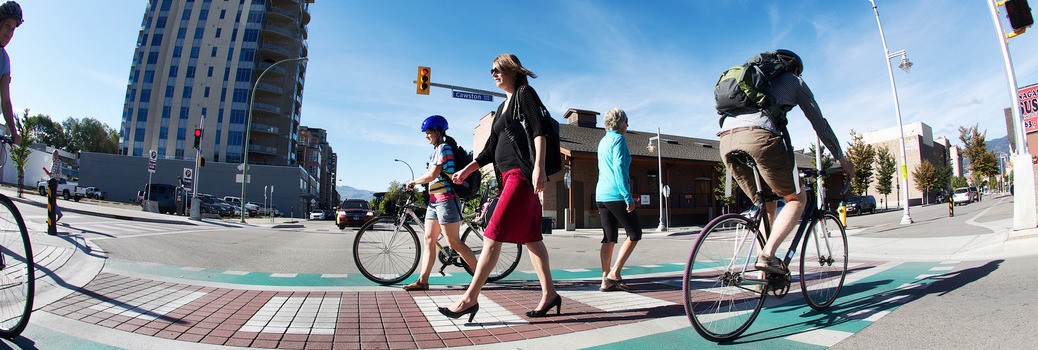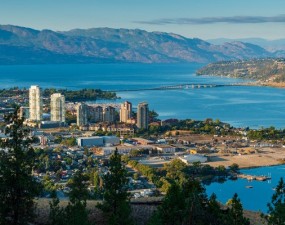Strategic reporting in transportation, uncovering the various dimensions
Topics
By Strategic Transportation Planning | Jun 25, 2020
As Kelowna evolves into a more mature city, our understanding of transportation and mobility is becoming more complex. The traditional view of transportation as just roads and physical infrastructure is radically changing. Today we understand that it must also take into consideration things like policies, programs, land use, technology, economic development, and social inclusion. As part of this, we also recognize that how we measure and report our progress requires a multi-disciplinary approach. And like many other cities around the world, we are learning as we go.
In a recent post, our City Manager, Doug Gilchrist, outlined how strategic planning and reporting “involves measuring our progress frequently and using data as evidence to make better decisions that help us achieve the intended results.” And while it is challenging to report on transportation in a simple yet comprehensive way, the online version of the progress report delivered to council a few weeks ago provides a good overview of our current situation and guidance for future decisions to respond to our Council’s priorities for 2019 – 2022.
Here are some of the key takeaways:
Community education (led by Stephanie T. & Alix M.): Helping people learn about transportation enables the community to have an informed conversation about investment priorities as our City grows. For example, the progress report shows how Kelowna residents are learning about -and engaging in- the development of the Transportation Master Plan. Education also helps increase awareness of how our transportation infrastructure is evolving and how to use it effectively.
Transportation planning and land use (led by Mariah V. & Robert M.): Development patterns affect the viability of different transportation options. Therefore, to ensure that transportation and land use planning are synchronized, the Transportation Master Plan is being developed in coordination with the Official Community Plan.
Public transportation (led by Jerry D.& Mike K.): We know that transit and other emerging options will continue to play a critical role in how our city functions, even as traditional public transportation evolves and COVID-19 puts additional pressure on our transit system. It is critical that we adjust our routes and schedules as ridership recovers to ensure that we are getting good value for our investment while also ensuring social distancing. With so much at stake, monitoring our progress is more critical than ever to ensure agile responses.
Emerging technologies and Mobility-as-a-Service (led by Matt W.): One thing we are paying close attention to is the evolution of transportation-related technology. As transportation becomes more connected, automated, shared and electric, there will be opportunities to provide Kelowna residents with more affordable and convenient options for getting around. In 2018, the City started collecting data for three emerging types of shared mobility that are operating in Kelowna: micromobility (a range of small, lightweight devices operating at speeds typically below 25 km/h, such as e-scooters and e-bikes), ride-hailing, and car sharing. The City continues to introduce and regulate new transportation options while making data available that will allow trip planning apps to build multi-modal trips. This will allow people to find the best options that work together to meet their needs for every trip.
Infrastructure for all modes (led by Gordon F. & Chad W.): The online progress report also shows how the City is investing in infrastructure that supports options such as biking, transit and shared mobility in order to better connect our higher density urban centres. It also shows how this infrastructure is affecting transportation choices and travel times.
Performance monitoring: The report uses extensive data to combine all the above elements. While it is too early to see the mid and long-term impacts of our 2019 projects, we know that previous investments have us trending in the right direction. For example, we have seen a 21 per cent increase in bike traffic at the seven bicycle counting stations in place since 2017. Between 2013 and 2018 we also saw a steady increase in annual transit ridership, while the number of walking trips remained steady.
As Kelowna continues to grow and mature, how we understand transportation is becoming more multi-faceted, and while COVID-19 has created new challenges and focused our attention towards rapidly retooling elements of our transportation system, we are not losing sight of the big picture. We continue to look for opportunities to innovate while improving our capacity to measure and report on the results. This way, we can make sure that the transportation department is responding to Council priorities and that our community is headed where it wants to go, as outlined in the Imagine Kelowna vision.
Note: The foundation for this work is a more technical document that provides a comprehensive picture of existing conditions in Kelowna. This data driven study is a good read for transportation and planning geeks, the document was developed by the same team, and led by Mariah V. and Cameron N.. The study also includes, at the end as an appendix, a very impressive big data congestion analysis by Clark L.







